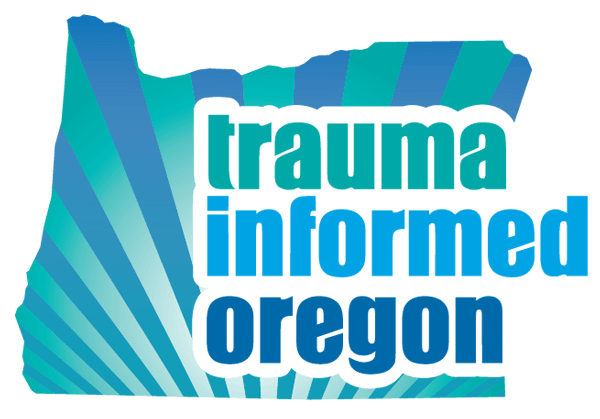Blog
 Expanding Knowledge of Youth Engagement
Expanding Knowledge of Youth Engagement

January 26, 2018
From Cammisha Manley, MSW/MPH Intern, Trauma Informed Oregon
My name is Cammisha Manley and I am a MSW/MPH intern at Trauma informed Oregon (TIO) where I have had the opportunity to apply my interests in mental health and organizational change. I have always been excited for opportunities to build relationships through youth engagement within my family, mentorship opportunities, and organizations that serve youth. Youth inspire me to participate in social justice and social change work with the hope of shaping society into a more inclusive and supportive environment for future generations. I often like to think that if the young people in my life can see me pursue my goals and lead a healthy life, then they may feel empowered to shape their own lives, pursue their own goals and know they always have someone cheering them on.
Building Relationships
My internship with Trauma Informed Oregon has become a great opportunity to build my skills in working with youth and to learn more about organizations that serve youth. While learning about trauma informed approaches can remind me of the pain and harmful impacts of adverse childhood experiences (ACEs) on youth, Trauma Informed Care (TIC) also reminds me that there are strategies to build resilience in youth to leverage their perspectives to improve the systems that serve them. The Ted Talk by Nadine Burke Harris, How childhood trauma affects health across the lifespan actually inspired me to pursue a master’s degree in social work in addition to a master’s degree in public health. While I have spent my whole life wanting to understand how people’s experiences shaped them, and this being my default approach to building relationships, it excites me that care providers and organizations are working to recognize and respond to the impacts of ACEs through using a TIC framework to apply NEAR science (neurobiology, epigenetics, ACE’s, and resiliency) on an organizational level to initiate change in practices and policies.
Supporting Youth in Taking Leadership
Prior to beginning this internship, I had become familiar with the Ladder of Youth Voice and Participation framework developed by Roger Hart (1997). On an organizational and community level, this tool can help adult allies and organizations be mindfully critical of their approach to youth engagement in terms of advocacy, decision-making, and leadership opportunities. The top 3 degrees of participation (in picture below: rungs 6, 7, 8) suggested by Hart (1997) represent equitable methods of engagement where young people are able to initiate projects and ideas, and decision-making is a collaborative and mutual process with adults. In this type of engagement, young people have space and opportunity to develop projects and plans that are empowered and supported by adults through providing resources and helping to eliminate barriers youth may encounter. However, I also think that it is important to consider the context when integrating youth voices. For instance, if an organization wants to perform an initial assessment of youth experiences, than consulting and receiving information from youth, as delineated by rung 5, may be the first priority for an organization before they are able to move up the ladder and expand their engagement initiatives. The Ladder of Youth Voice framework aligns closely with TIC principles to create safety through transparency, restore power through choice, and build self-worth and value through collaboration and mutuality. I am excited to apply a trauma informed lens and these tools discussed in my approach to engaging with youth in my family and future opportunities!

When I think about engaging young people, I use this ladder to remind me that it is important to support youth in taking leadership. My role is to support them in actualizing their ideas on a professional and personal level. For example, one of my favorite moments this December was spending four hours cleaning and reorganizing my 14-year-old twin cousins shared room with them. They prompted this project and I just asked if I could help them. Now that my cousins are adolescents, I am always trying to find new ways to connect and engage with them. As I helped them clean their room, I made sure to ask them many questions about how they wanted things to be organized and what they think they needed in their room to make it more comfortable for them. It was very important to me that they felt ownership over the changes we were making and that they could enjoy the process. As we cleaned, we talked about how a clean environment can make us feel safe and improved our ability to focus. At the end, they said they felt heard and engaged with me.
2018!
This brings me to 2018! At TIO, I have been supporting coordination and assessment with youth serving organizations that want to implement TIC practices. This work has exposed me to methods for promoting organizational change that are strengths based, collaborative, and engaging for all members of the organization. As I participate with others in this work, I see opportunities that foster understanding of youth experiences and possibility for building caring relationships with staff who aim to support the needs of youth. I believe these efforts can create space for young people to be involved in service delivery planning and make sure their needs are met. TIC practices have the potential to help youth to build supportive relationships, feel safe in various service environments, and form leadership opportunities that empower youth. Organizations are able to build resiliency on the individual and community level when youth feel supported, understood, and safe in seeking resources and pursue community activities. I look forward to exploring more opportunities and continuing the work in my career and with my family.
